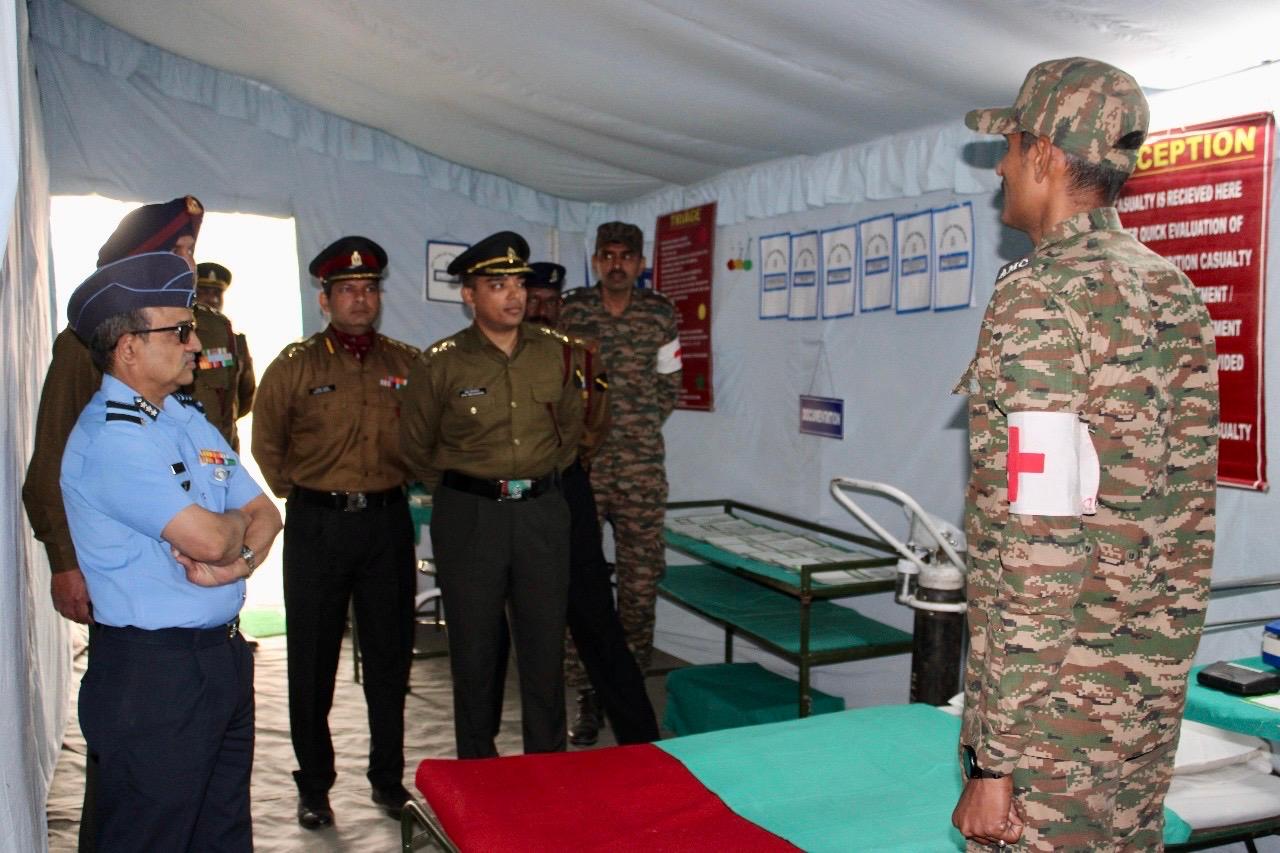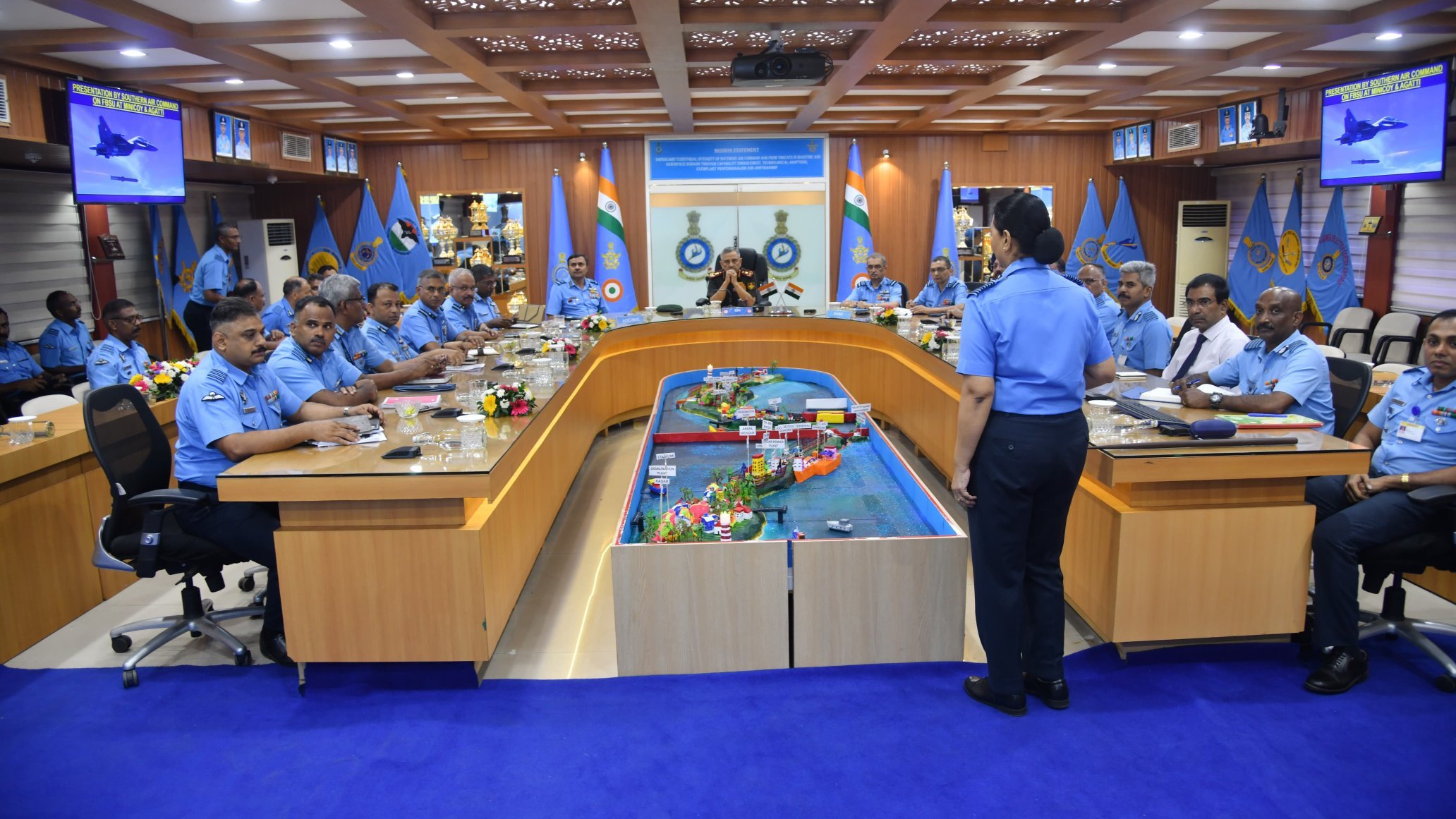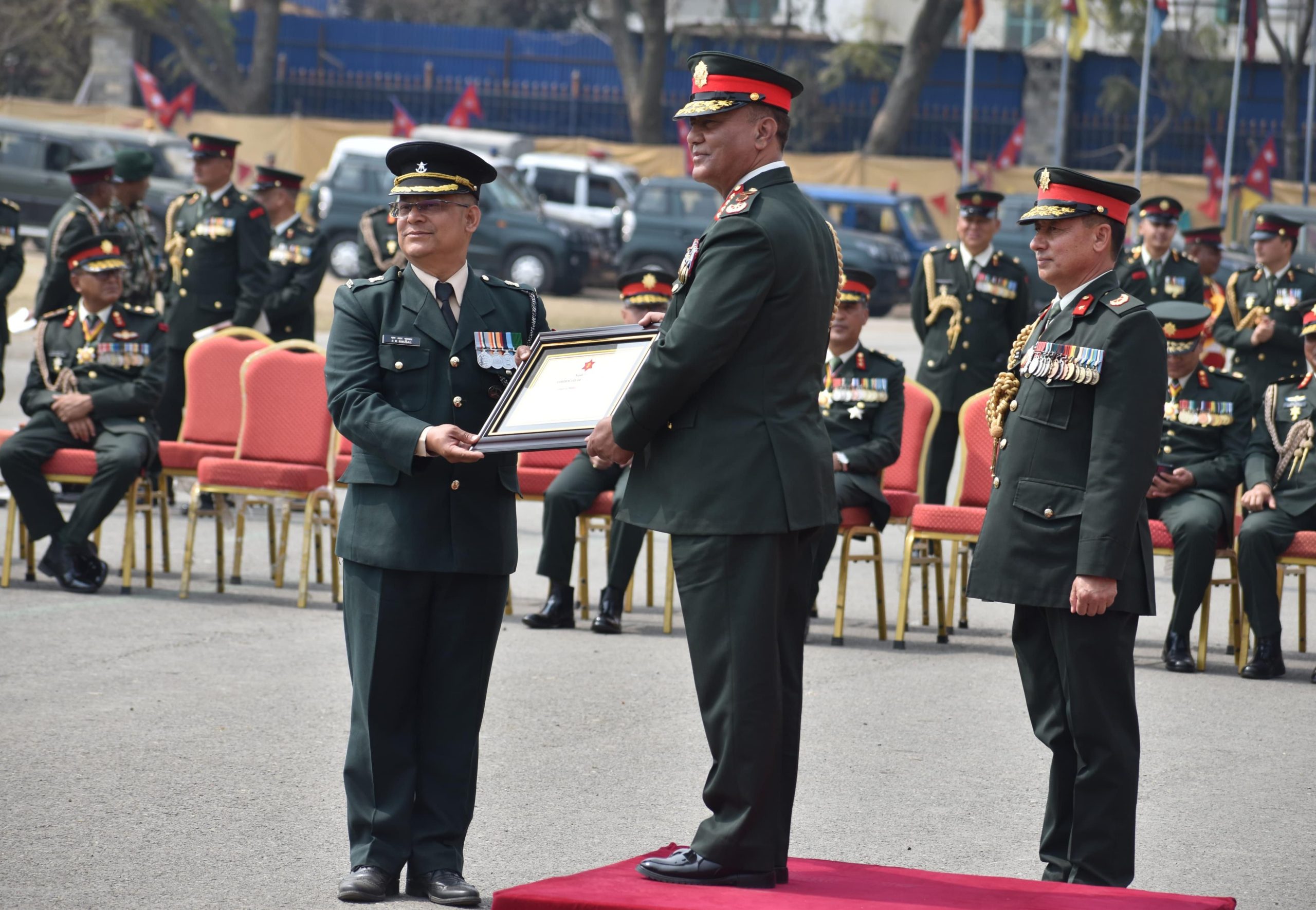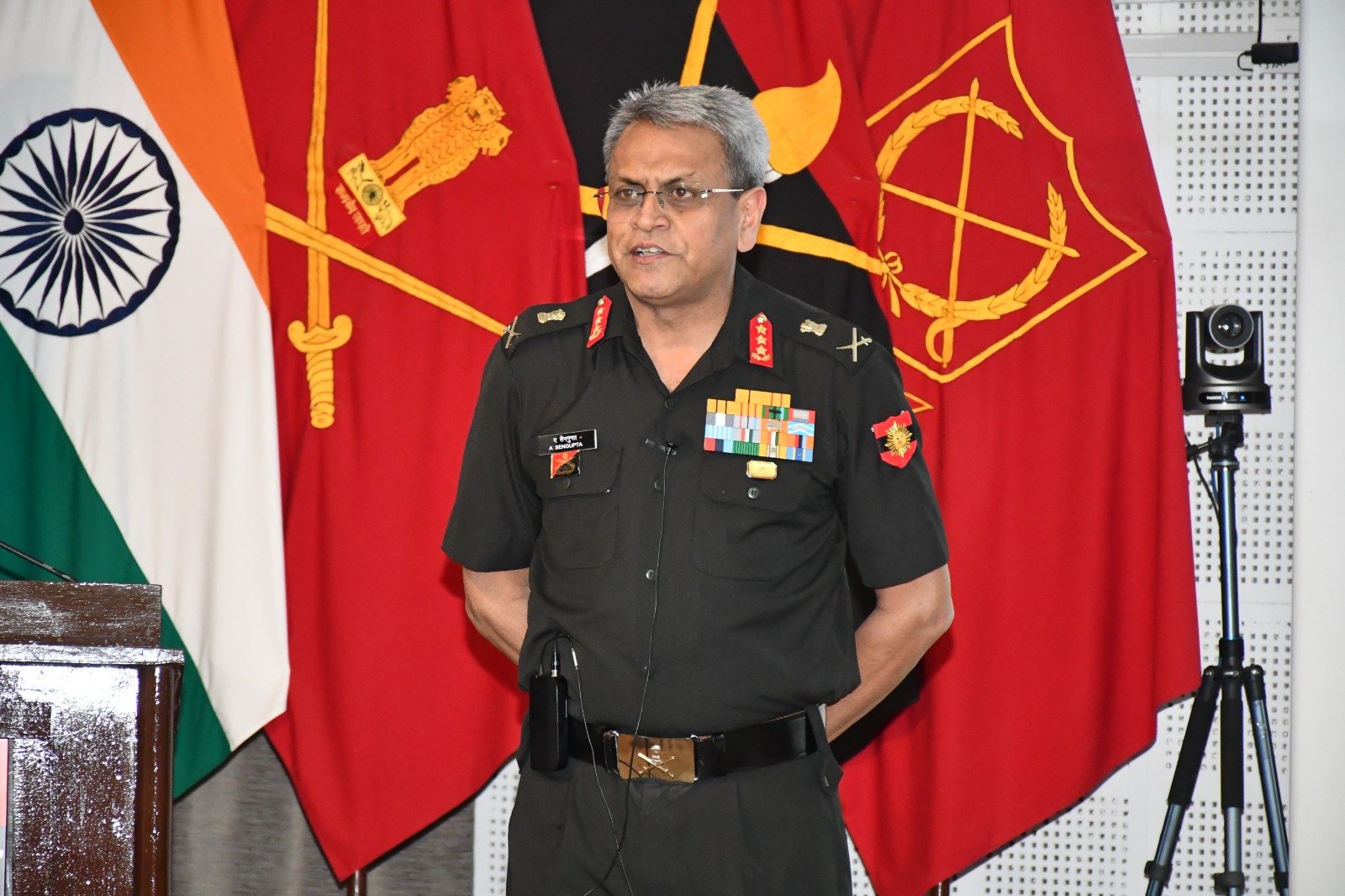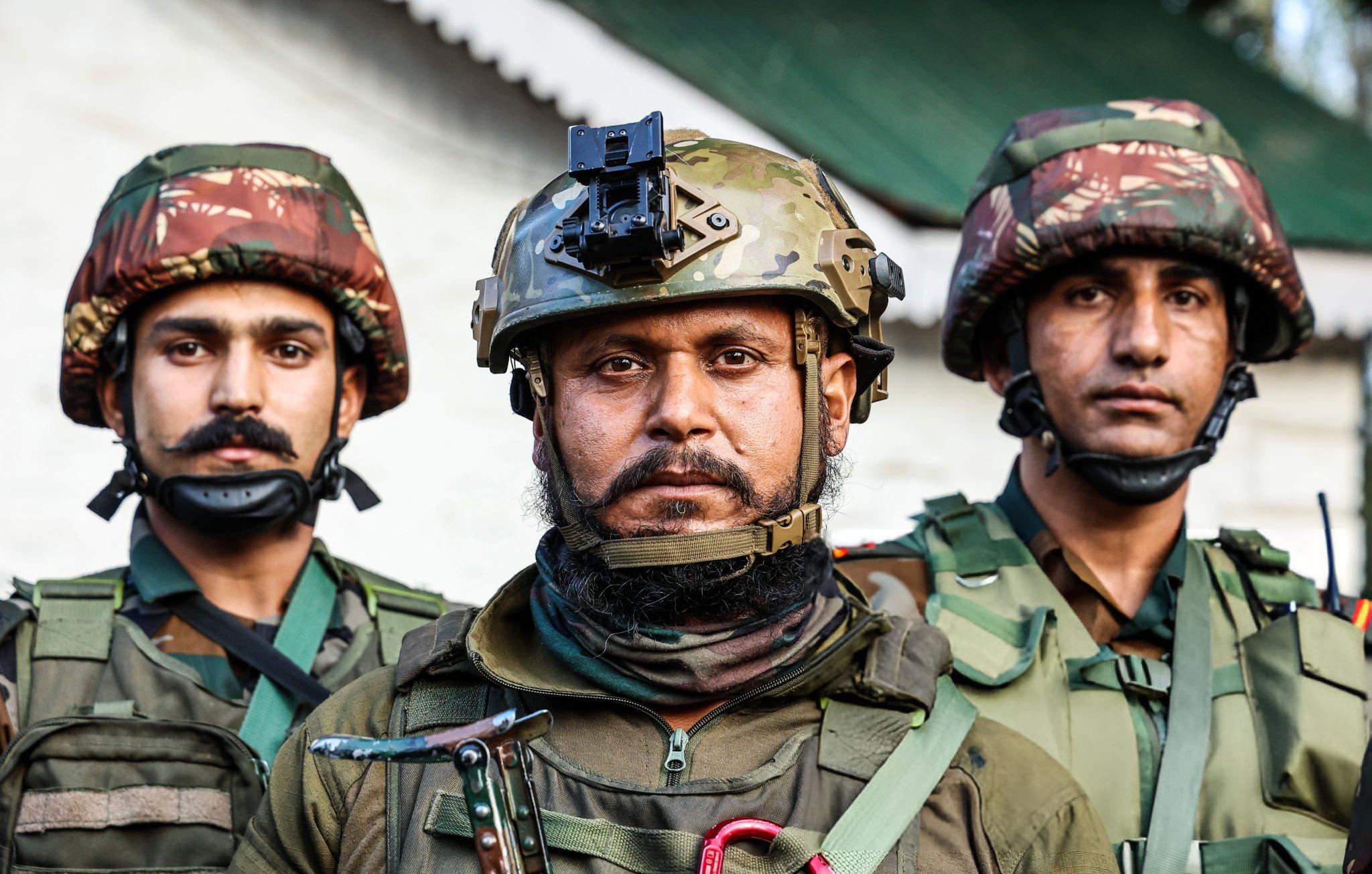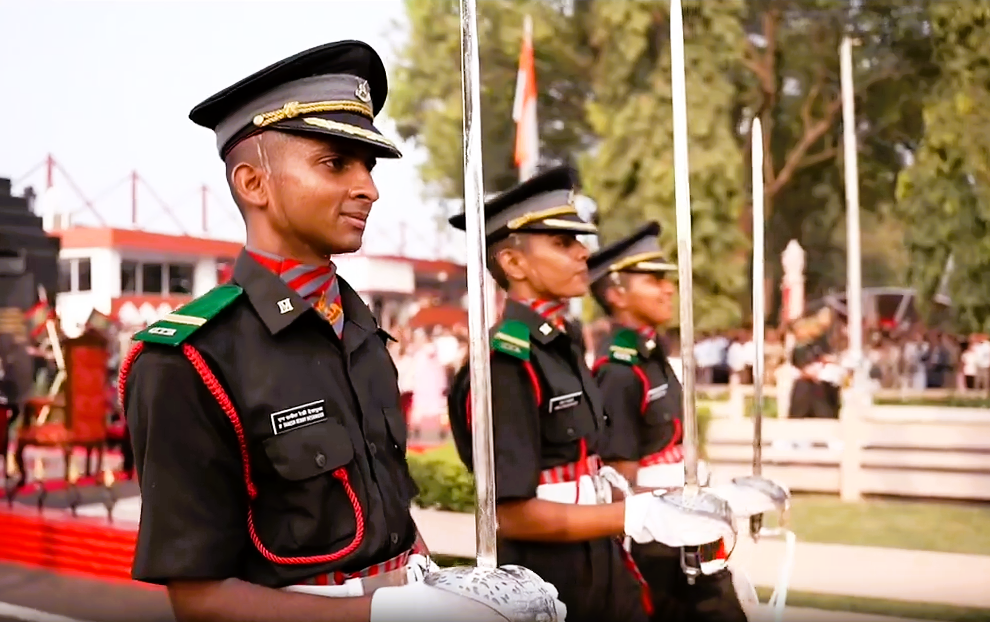Air Marshal MS Sridhar Reviews 159 General Hospital and 307 Field Hospital
Air Marshal MS Sridhar, Deputy Chief (Med), HQ Integrated Defence Staff (IDS), conducted a comprehensive review of 159 General Hospital…
CDS General Anil Chauhan Reviews Strategic Airfield Developments and Maritime Innovations at Southern Air Command
Chief of Defence Staff (CDS) General Anil Chauhan visited Southern Air Command, where he was briefed on upcoming joint user…
Indian Army Band Honored at Nepal Army Day 2025 in Kathmandu
The Military Band of 39 Gorkha Training Centre, Varanasi, proudly represented the Indian Army at the 262nd Nepal Army Day…
Lt Gen Anindya Sengupta Speaks at Army War College Mhow
Lieutenant General Anindya Sengupta, General Officer Commanding-in-Chief, Central Command, delivered a thought-provoking address on “Shaping Tomorrow’s Strategic Leaders for Adaptive…
Rank Wise Pension of Indian Army Jawan and Officers
Military service demands unwavering dedication, and the Indian Army rewards this commitment through its robust pension system. Over 3.2 million…
SSC Tech 64 and SSCW Tech 35 Merit List Out Now
The Indian Army has officially released the Merit List for SSC Tech 64 (Men) and SSCW Tech 35 (Women) for…

